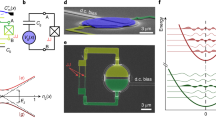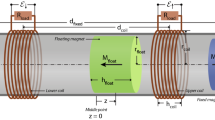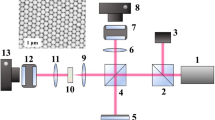Abstract
IT has been shown1 that mechanical forces exerted by an electromagnetic field can be employed to make absolute measurements of microwave power at levels of a few watts or more. Experiments carried out in this department by Mr. I. M. Stephenson have shown that the same method can be used to measure a few tens of milliwatts of power at a wave-length of 3.2 cm. by making use of a vibration-free table and amplifying the resulting small deflexion by means of a photo-cell and galvanometer.
This is a preview of subscription content, access via your institution
Access options
Subscribe to this journal
Receive 51 print issues and online access
$199.00 per year
only $3.90 per issue
Buy this article
- Purchase on Springer Link
- Instant access to full article PDF
Prices may be subject to local taxes which are calculated during checkout
Similar content being viewed by others
References
Cullen, A. L., and Stephenson, I. M., I.E.E. Monograph No. 42.
Author information
Authors and Affiliations
Rights and permissions
About this article
Cite this article
CULLEN, A. A Microwave Vibration Wattmeter. Nature 170, 1121–1122 (1952). https://doi.org/10.1038/1701121a0
Issue Date:
DOI: https://doi.org/10.1038/1701121a0
Comments
By submitting a comment you agree to abide by our Terms and Community Guidelines. If you find something abusive or that does not comply with our terms or guidelines please flag it as inappropriate.



